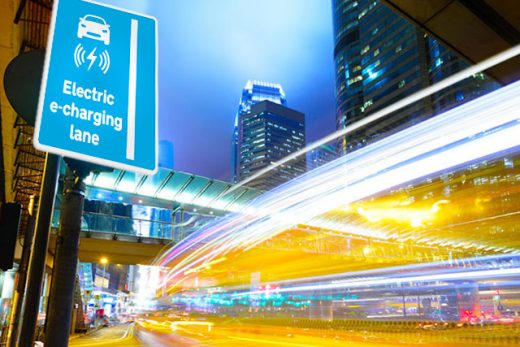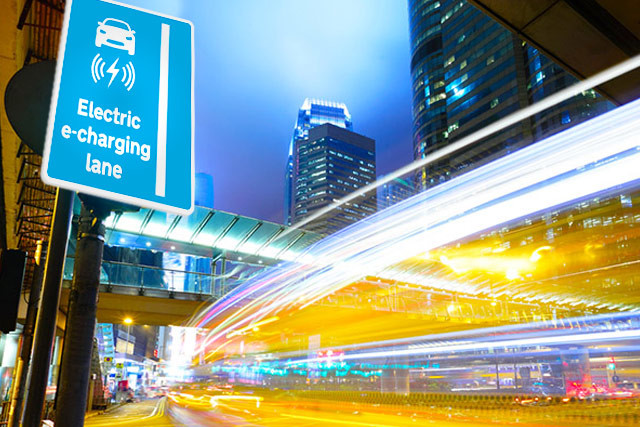Are these the roadsigns of tomorrow?

With the emergence of industry-changing technologies like all-electric cars and autonomous vehicles poised to take over the roads of tomorrow, it makes sense that as the vehicles we travel in change. So will the roads they travel on and roadsigns you’ll use to navigate them.
This inevitable future inspired the folks at CarKeys.co.uk to create five artist renditions of signs we may very well see on roads in the not-too-distant future.
An e-charging lane?

Electric vehicles are a great opportunity for wireless charging to eliminate the need to stop at a refueling station for busy commuters. Solutions for e-charging lanes are already being developed and trialed, enabling cars to charge while they move down the street. One popular solution involves electronic circuits embedded in the street that enables coils built in to the electronic car to pick up and charge with the electromagnetic field generated by the street’s circuits.
Straddle bus route

Another strong possibile sight in the not-too-distant future is so-called straddle busses, a recent concept introduced at the Beijing International Hi-Tech Expo this year. The bus is elevated, with the ability to straddle vehicles on the road, eliminating the need to stop during a traffic jam and reducing the negative impact the bus’ frequent stops have on the flow of traffic.
Hyperloop station

When Tesla and SpaceX head Elon Musk started speaking about the potential of a Hyperloop to connect the world with a travel medium that can transport someone across the United States in as little as 30 minutes, a future where you could have a cheesesteak in Philadelphia and barbecue in Texas with as little travel time in-between as it takes some to preheat the oven and bake a batch of cookies appeared possible.
Today, companies like Hyperloop One are rumored to be planning to break ground in Dubai to bring the futuristic travel option available.
Autonomous car lane

With autonomous vehicle technologies advancing at a breakneck pace, the idea of a dedicated lane for these driverless cars doesn’t seem too far fetched. In fact, since these cars are capable of calculating risk and reacting to obstacles in a fraction of the time it takes a human to do so, it stands to reason that things like traffic congestion and stop-and-go traffic issues on our highways could be lessened by allowing these vehicles their own lane to speed down the street and leave more room for human drivers in the remaining roadway.
Robots at work

Our vehicles may not be the only thing changing in this new era of connected autonomous devices. Road construction, which is an often demanding and potentially dangerous job, could soon be performed by networked autonomous robots that don’t need coffee breaks, hazard pay, or overtime.
These machines could even be autonomously driven to the work site and put to work without ever having to by physically handled by a human being. Robots are already being put to work laying bricks for home construction – even at triple the speed and precision of its human counterpart.
With everything that is going on in the tech and travel industries today, the signs we see as we fly down the freeway may soon change. The question is, will there still be human drivers around to read them?
The post Are these the roadsigns of tomorrow? appeared first on ReadWrite.
(25)



